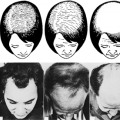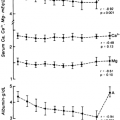PROGNOSIS OF PITUITARY ADENOMAS AND THERAPEUTIC PERSPECTIVES
PROGNOSIS
Prognosis depends on the type of tumor and a combination of other factors, including (a) the severity of the endocrinologic disturbance or mass-related symptoms and signs, (b) the size and extent of the tumor as indicated earlier, (c) the success of therapy in reversing these abnormalities, (d) morbidities due to therapy, and (e) permanence of the therapeutic response. Although pituitary tumors are generally benign, the failure to provide adequate therapy can lead to severe functional deficits and death. Optimal therapy can greatly improve quality and duration of life.
ACROMEGALY
If patients with acromegaly remain untreated, they have a 10-year reduction in life expectancy, in particular due to cardiovascular and respiratory problems and to the increased risk of neoplasms. The standardized mortality ratio (SMR, the observed mortality divided by the expected mortality in a sex- and age-matched control population) is from 1.8 to 3.46,48,49 and 50 The most important predictive factor of mortality is the “final” posttherapeutic serum GH level.46,47,48,49 and 50 When the “final” serum GH level is <2.5 μg/L, the mortality is not significantly different from that of the general population. When the final serum GH level is >2.5 μg/L, the SMR is between 1.4 and 2, which signifies a statistically different mortality from that of the general population. This indicates that application of the more stringent definition of cure or successful outcome in acromegaly which is currently used (i.e., serum GH levels of <2.5 μg/L) is probably associated with better survival than were the criteria previously used (i.e., serum GH <5 μg/L or <10 μg/L).
Stay updated, free articles. Join our Telegram channel

Full access? Get Clinical Tree





